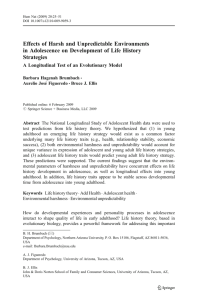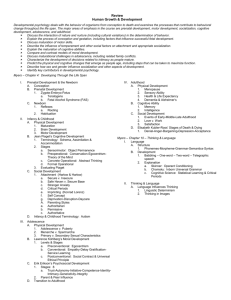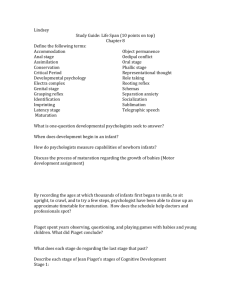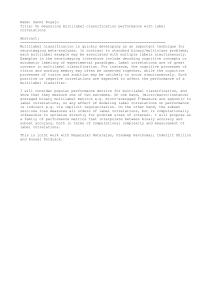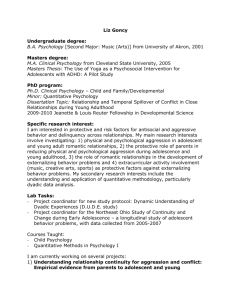Paper
advertisement
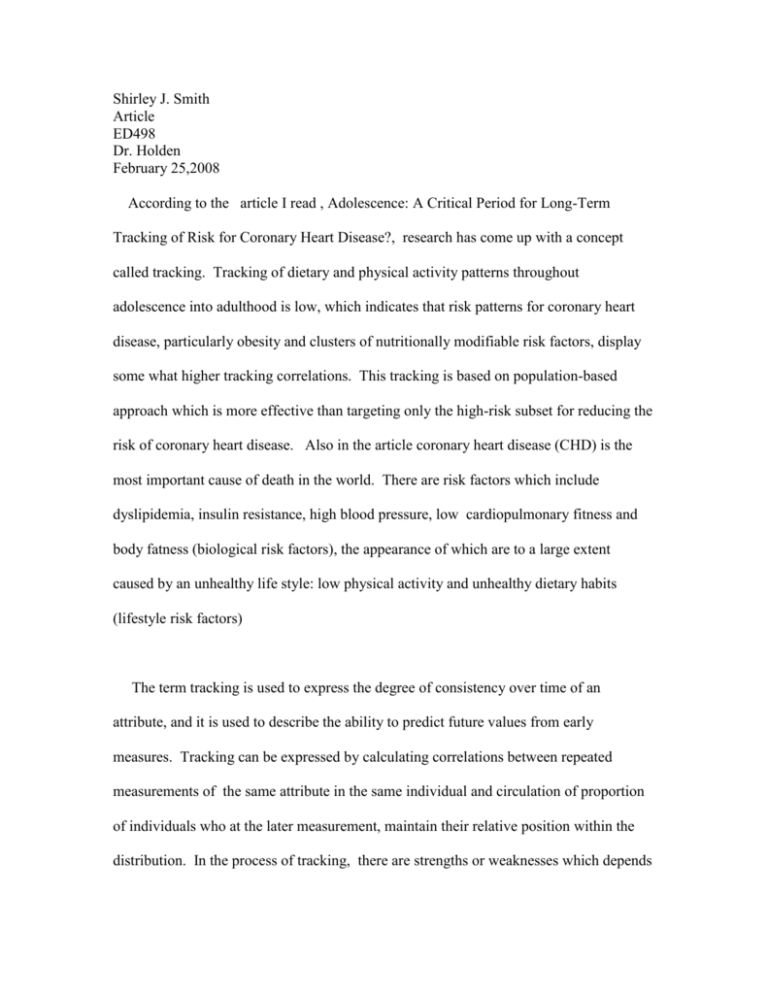
Shirley J. Smith Article ED498 Dr. Holden February 25,2008 According to the article I read , Adolescence: A Critical Period for Long-Term Tracking of Risk for Coronary Heart Disease?, research has come up with a concept called tracking. Tracking of dietary and physical activity patterns throughout adolescence into adulthood is low, which indicates that risk patterns for coronary heart disease, particularly obesity and clusters of nutritionally modifiable risk factors, display some what higher tracking correlations. This tracking is based on population-based approach which is more effective than targeting only the high-risk subset for reducing the risk of coronary heart disease. Also in the article coronary heart disease (CHD) is the most important cause of death in the world. There are risk factors which include dyslipidemia, insulin resistance, high blood pressure, low cardiopulmonary fitness and body fatness (biological risk factors), the appearance of which are to a large extent caused by an unhealthy life style: low physical activity and unhealthy dietary habits (lifestyle risk factors) The term tracking is used to express the degree of consistency over time of an attribute, and it is used to describe the ability to predict future values from early measures. Tracking can be expressed by calculating correlations between repeated measurements of the same attribute in the same individual and circulation of proportion of individuals who at the later measurement, maintain their relative position within the distribution. In the process of tracking, there are strengths or weaknesses which depends on the preciseness of the measured attribute Higher measurements and lesser variation equate to a larger strength of a correlation over time. Higher measurements can be achieved by averaging repeated measurements and by securing a high measurement precision. Studies have been done to show the process of tracking through the following aspects. Eating Habits- Three longitudinal studies were done to show tracking of eating habits over several years, from adolescence to adulthood. They included a Dutch Study of 200 males and females followed from the age of 13 years. A second study was from Pennsylvania in which menarchal females for the age of 12 years until they were 18 years old was also conducted. The Young Hearts Project from Ireland was done. It’s intake was done over a period of 15 and 22 years. Physical Activity-this tracking included a Finn study that followed six cohorts of boys and girls ranging from ages 3-18. The Amsterdam Growth study was also done. It’s interview of a few active or inactive 13 years old was also active or inactive at the age of 21 years. Physical Fitness- this correlation over a period of time was difficult to compare. Studies were also done on this aspect. Weight- studies show that from 1970 to the summer of 1992 moderate to high correlations between adolescent and adult obesity. Results state that obese children will likely be obese adults. Blood Pressure-these levels show low to moderate degree of stability from adolescent to adulthood. The tracking correlations were based on single measurements of blood pressure. Lipids and Lipoproteins- tracking shows that blood concentration of total cholesterol and lipoprotein appear somewhat stable from adolescence to adulthood. Insulin/Glucose- studies were done on different groups of individuals Risk Clusters -Studies show that tracking of clusters may be even stronger than individual risk factors. Summary The article that I read about tracking states the definition of tracking and its attributes. The tracking is done from adolescent to adulthood . The findings are based on eating habits, physical activity, physical fitness, weight, blood pressure, lipids and lipoproteins, insulin/glucose and risk clusters. Also the tracking involves calculations and correlations of findings on boys and girls from adolescent to adulthood. Each aspect had a study done to show what the calculations and correlations would be for boys and girls in each category.
